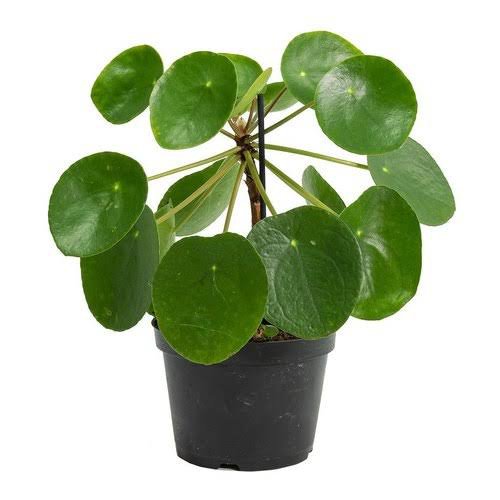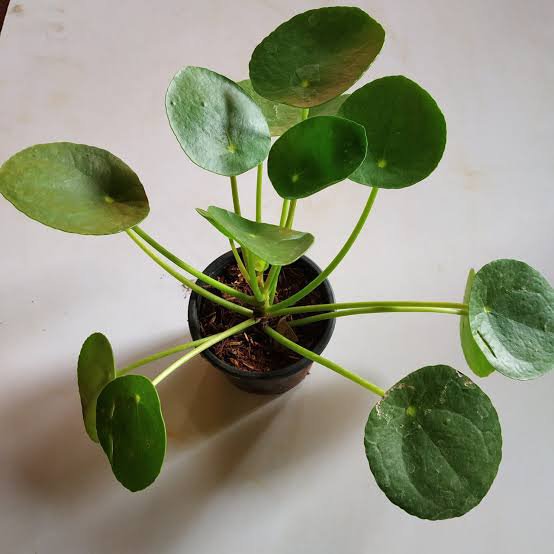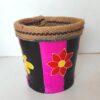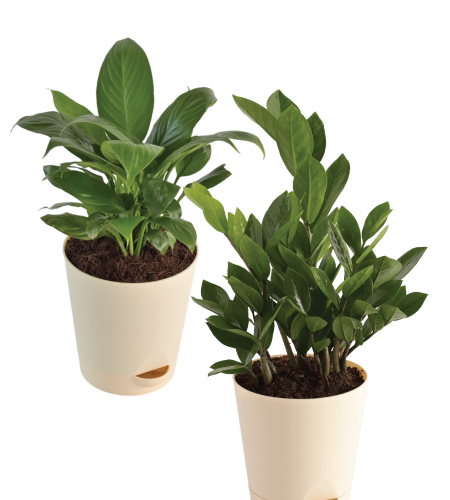It is grown primarily for its unique foliage. Although it can produce small, white flowers throughout the spring months, Pilea peperomioides does not often flower when grown indoors. Learn how to grow this attractive houseplant.
Pilea Peperomioides Care
Although this popular houseplant may be difficult to get your hands on, once you have one it is surprisingly easy to care for. Provide your Pilea peperomioides with bright light, semi-regular watering, and some light feeding in the spring and summer months and it will thrive. Plus, Chinese money plants are easy to propagate, and a healthy plant will produce plenty of offshoots which you can easily separate to create more plants which is one of the reasons it is called the friendship plant. Share them with friends, or keep them for yourself—once you have a Chinese money plant, you will never need to buy another one!
Light
The Pilea peperomioides thrives in medium to bright indirect light. Rotate your plant regularly to keep it looking symmetrical. Avoid locations that receive harsh, direct light as it will burn the delicate leaves.1
While this plant can adapt to lower light conditions; it will become leggy, grow fewer offshoots, and the coin-shaped leaves may become smaller. Overall, this plant is healthiest and most attractive when grown in bright light conditions.
Soil
Plant your Pilea peperomioides in rich, well-draining soil. A high-quality organic potting mix that is peat-based or coir-based is best. Amend the soil with perlite to increase the drainage and ensure the soil does not become waterlogged. A soil pH between 6.0-7.0 is best for this plant.
Water
This evergreen perennial is considered to have medium water needs. Allow the plant to nearly dry out between waterings and then water well. The leaves of Pilea peperomioides will begin to droop when it dries out, which is a good indication that it’s time for watering.
Temperature and Humidity
The average household temperature and humidity are fine for the Pilea peperomioides. Where possible, avoid overly dry conditions, which usually means keeping the plant away from heating vents or baseboards.
The Chinese money plant is hardy to freezing temperatures, but when kept indoors avoid exposing it to temperatures below 50 degrees Fahrenheit (10 degrees Celsius). However, a short period of cold exposure in the winter months may help to encourage blooming.
Fertilizer
The Pilea peperomioides benefits from monthly fertilization in the spring and summer months. Use a balanced, all-purpose fertilizer for best results. Avoid fertilizing during the fall and winter months when the plant has gone into dormancy.
Potting and Repotting Pilea Peperomioides
When properly cared for a Pilea peperomioides is fast-growing and can quickly fill its pot with roots and offshoots. Yearly repotting in the early spring or summer months to refresh the soil, remove offshoots (if you wish), and upgrade the pot size is recommended.
When choosing a pot for your Chinese money plant the most important thing to take into consideration is proper drainage. In short, ensure that the pot has a drainage hole!
Propagating Pilea Peperomioides
Fondly nicknamed the “sharing plant,” a healthy Pilea peperomioides is very easy to propagate as it readily grows offshoots. These offshoots grow up from the root system, but can also grow from the nodes along the stem of the mother plant, usually in places where old leaves have fallen off.
Once the offshoots are a couple of inches tall, it is safe to separate them from the mother plant if you wish. If you want a plant with a fuller, bushier look you can also leave these offshoots on the mother plant.
To separate an offshoot from the roots of the mother plant, gently dig around in the soil to expose the roots of the offshoot, and with a clean knife or pruning shears, cut the main root an inch or two below the soil. Immediately move the cutting into some moist soil in a separate container. Keep the soil moist (but not waterlogged) until the new plant has established a root system in the new pot, and then resume a regular watering and fertilization schedule.










Reviews
There are no reviews yet.